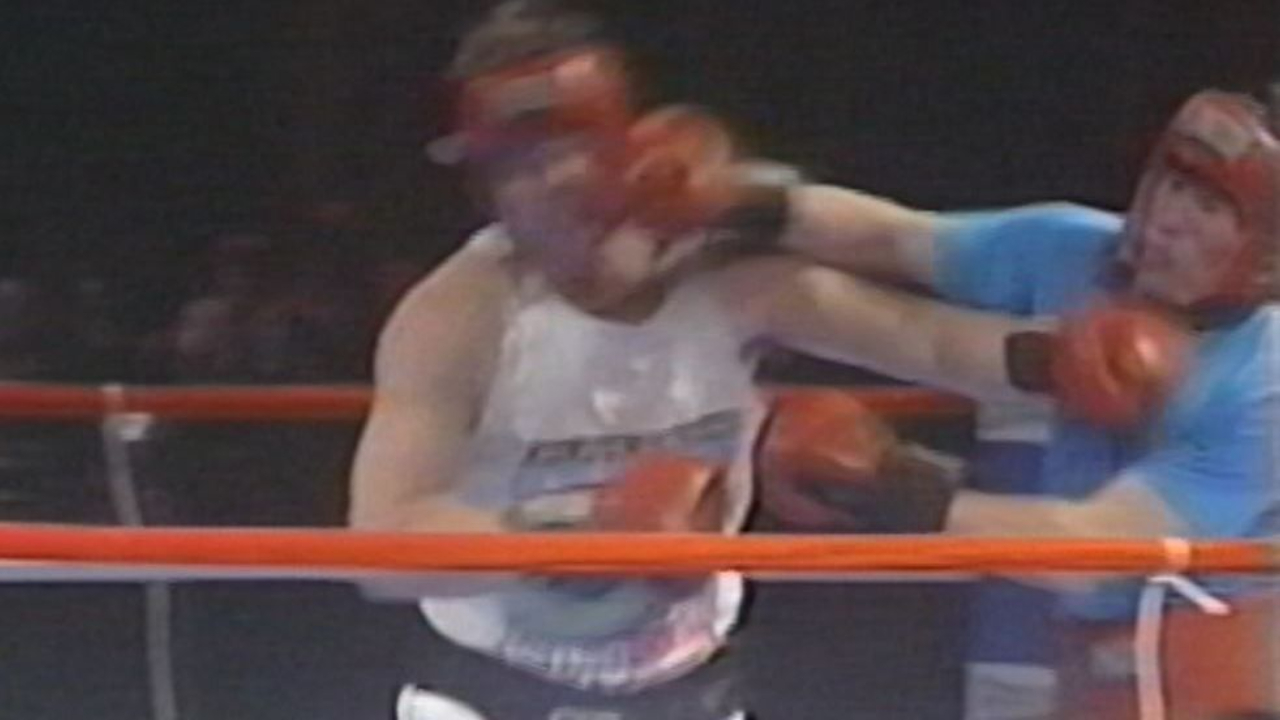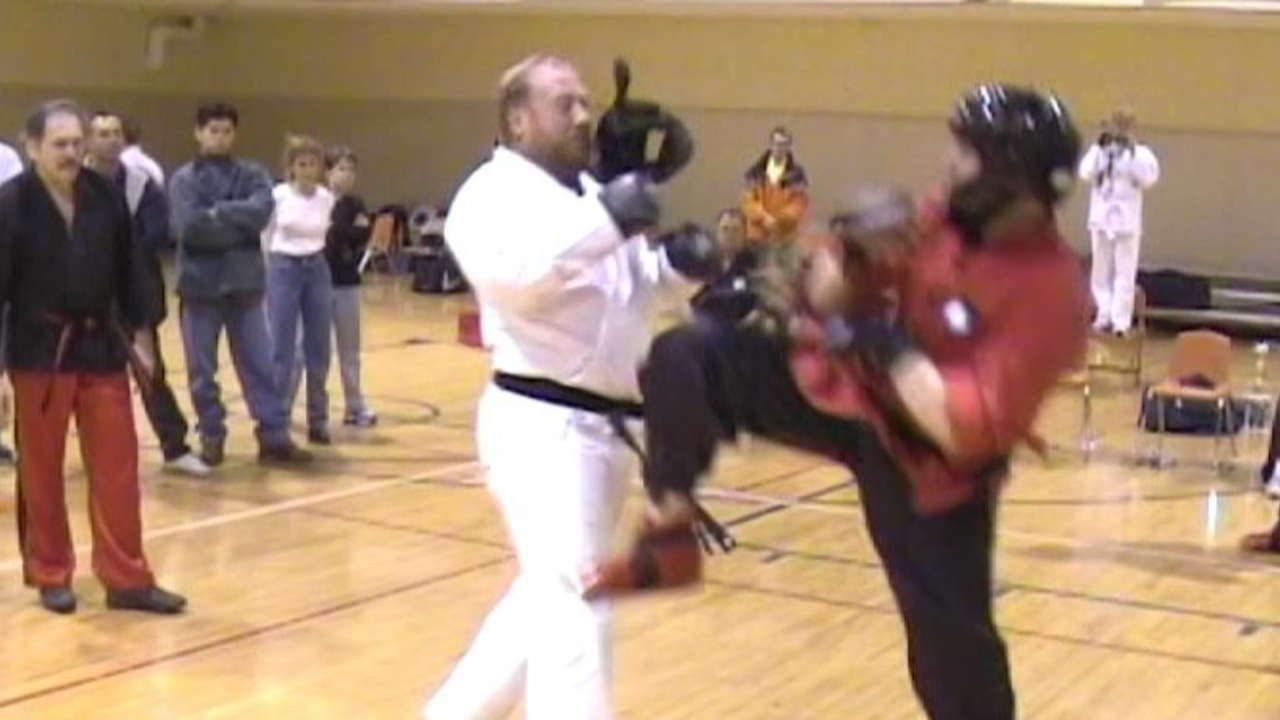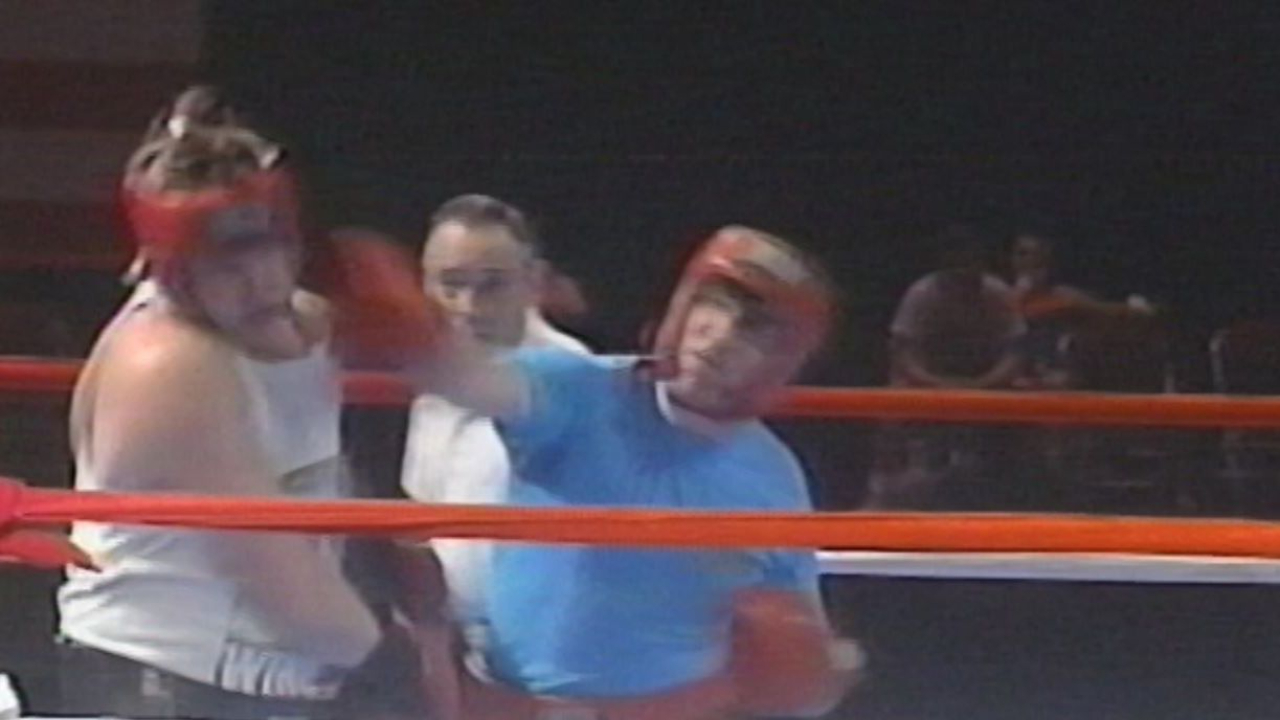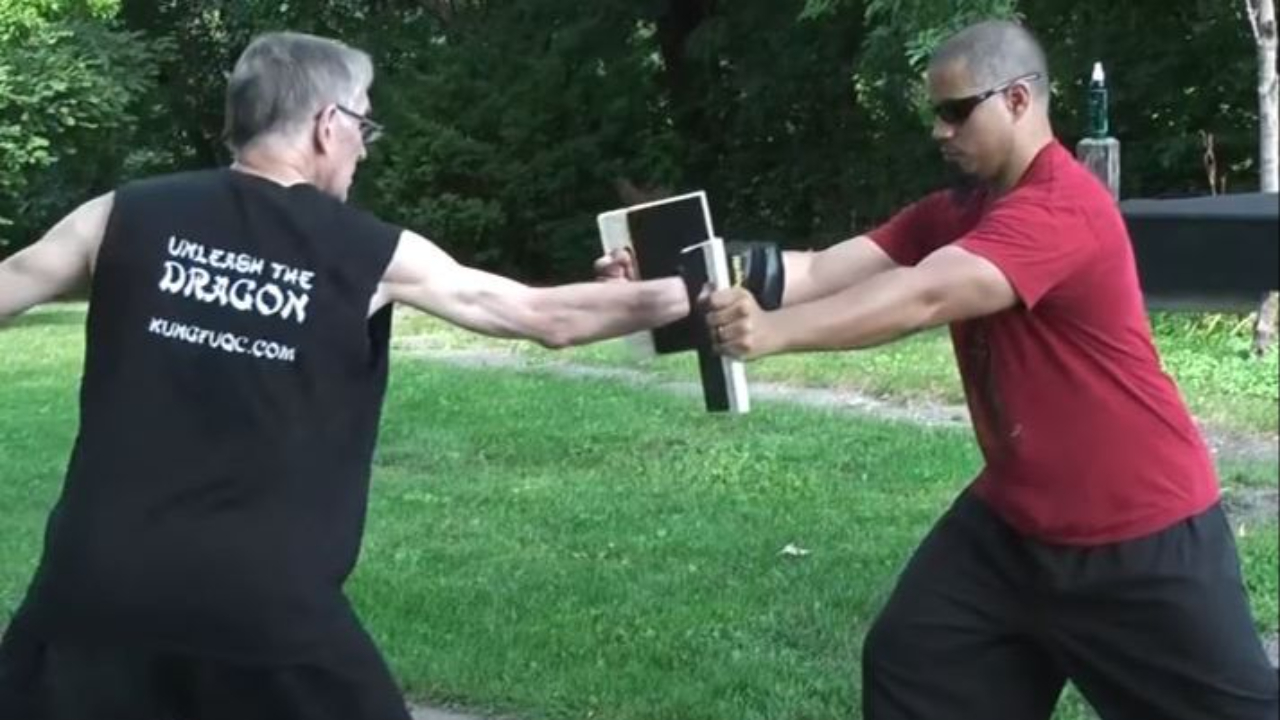A Martial Arts Myth: Point Sparring Robs Your Power in a Real Fight

The photo above shows me punching my opponent in my only full-contact match.
In my opinion, a highly-skilled martial artist should be able to apply the right amount of force when needed, but in some situations, you should be able to apply no force at all. Being able to do both requires skill.
There is currently a real "tough guy" attitude in martial arts, especially online. Here is one argument they make: If you spend a lot of time point-sparring, you won't be able to apply force when you need it in a self-defense situation. Instead, you will pull your punches.
I call malarkey, and I know it's malarkey because of my personal experience.
Skill Development and Control
Pulling punches and using light contact in sparring teaches fine motor control and precision. This enables you to "choose" between delivering light or heavy contact, depending on the situation, which is crucial in real-life self-defense to avoid unnecessary harm or legal consequences. It is also important to be able t...
After 49 Years of Martial Arts Why Am I Practicing So Much?

A little over a week ago, I marked the 49th anniversary of my first martial arts class. You might know the story by now -- 1973, a garage that had been turned into a dojo in the rear part of a strip mall in Lexington, Kentucky -- a room full of young people inspired by Bruce Lee -- in fact, there were so many new students in the intro class, the garage door was opened and the class spilled out into the shopping center's parking lot.
The following week, a large chunk of people didn't return. The week after that, we all fit inside the dojo with the door closed. Every month that passed, the class got smaller but still had nearly 20 students.
I practiced an hour a day, punching and kicking up and down the 7th floor hallway in Commonwealth Hall at Eastern Kentucky University. I was determined to become good.
Now, after 49 years, I find that I am still just as determined to improve my skills as I was in 1973.
Shouldn't I feel like a "master" by now? Instead, I feel more like a beginner....
How to Embarrass a Teacher When You Violate Martial Etiquette

I have found that manners in martial arts can be a bit tricky. And depending on who you study with, you need to think from a different cultural perspective.
In a recent podcast interview, Chen Taiji instructor Nabil Ranne of Germany explained how he violated martial arts etiquette during an early conversation he had with his teacher, Chen Yu.
He asked Chen Yu how many times each day should he practice the form that some of us call Laojia Yilu but is also known as "Old Frame First Form," or "First Road."
Chen Yu replied, "Five times a day."
Nabil says he responded to Chen Yu by saying something like, "But your grandfather said you should do thirty routines per day."
Later, when Nabil understood more about martial etiquette, he realized and regretted his mistake.
By responding to Chen Yu as he did, in Chinese culture he was telling Chen Yu that either Chen Yu was wrong, or that his grandfather was wrong.
Listen to the interview with Nabil by following this link. Or play and downl...
Training with Bill Wallace at the Martial Arts Supershow 2010

It's funny how your life crosses path with some people in a way you couldn't have predicted.
In 1976, I was 23 years old and watching a live karate kickboxing match on TV. Bill "Superfoot" Wallace knocked out a big bald fighter with a hook kick to the head. I was so excited, I started working a lot harder at the hook kick, and it has won me many tournament matches over the years.
I first met Bill Wallace in 1982. I was a producer at WCPO-TV in Cincinnati and he came to town for an exhibition match and martial arts convention. He stopped by the station and I interviewed him.
Flash forward almost 20 years to 2001. My friend John Morrow sponsors Bill Wallace to come to do a workshop at his school here in the Quad Cities. I go to John's house and meet them and we all go out to the ice cream store. It's a summer evening and we're hanging outside an ice cream store with this martial arts superstar. I couldn't believe it. I attended the workshop and he kept using me as his dummy, showing k...
Real Self-Defense Requires Fire and Fury, Not Punch and Stop

Keep it Simple for Ultimate Success in Self-Defense

Do You Share the Quality that Made Bruce Lee Successful?

I am reading "Bruce Lee: A Life," by Matthew Polly. Bruce possessed one quality that he had in common with almost all successful people.
Bruce Lee believed in himself, had a goal, and worked hard to reach his goal.
Do you have a martial arts goal? Do you want to learn Bagua, or Taiji, or Xingyi?
It is a good idea not to write down a goal that is overwhelming. Do you want to learn Chen Taiji? Then start with the silk-reeling exercises. Set a goal of learning one every two days, and set a time to study. It may only be ten or twenty minutes, but that is okay.
Perhaps your goal is to learn a form. You can have a big goal such as "Learn Xingyi," but then have smaller goals that help you achieve the big goal.
Do you want to learn the Five Fist Postures? Then write down your goal, set a day to complete it, and then plan out the time to study and practice and get feedback.
Maybe your next goal is the Bagua Swimming Body form. Set a time to complete it, then make a plan to take it move...
Martial Artists Do Not Need to Prepare to Face an MMA Opponent

It is a B.S. argument, but it is the current fad in martial arts discussions.
"If you can't take on an MMA fighter, your martial art is useless."
Nonsense.
Being prepared to take on an MMA or a UFC fighter is NOT real-life self-defense.
That's like saying if you are into boxing, you have to be prepared to take on a Golden Gloves competitor.
The truth is, you don't.
Nobody trains all-out. Nobody trains realistically. It is mental masturbation to think that you do.
If you did train all-out, like a "real" fight, you and your partners would not train very long.
Unless you are in a full-contact fight with no rules at all, it is very difficult to defend the way you want to.
If a shooter comes in, I want to knee them in the face and strike down on the back of their neck with my elbow. If someone clinches, I want to bite a hole in their arm.
If anyone practiced realistically, in any martial art, we would all take turns going to the hospital.
We were practicing clinches last week, ...
Boards Don't Hit Back -- Bruce Lee's Famous Line is Only Entertainment

Last Saturday at our practice, we took a few minutes to have fun with board-breaking. We used the black rebreakable board, which is worth a couple of regular wooden boards. We tried different breaks from short range, the idea being if you are in close, can you generate enough power to do some damage to an opponent.
Here is the video that resulted.
When you put a video like this online, you will inevitably have someone reply with "Boards don't hit back." Sometimes a friend will say it in jest, but sometimes it is said by someone who is serious.
"Boards don't hit back" is a line that Bruce Lee said in "Enter the Dragon," when Bob Wall broke a board at the beginning of a fight with Bruce.
Since 1973, some Bruce Lee "purists" and "Real Fighting" macho guys have pretended that board breaking is stupid.
They would be wrong.
Yes, boards don't hit back. Neither do heavy bags. Neither do makiwara boards. And neither does paper.
Did you know that Punching Paper was one of Bruce Le...
Connecting -- The Number One Skill in Tai Chi, Hsing-I or Bagua

Then I connected. I relaxed and got my head out of the match. I waited with a relaxed state of readiness for him to move.
When he attacked, I was already moving. When he arrived, I was already there and planted a hook kick on the side of his face.
When I took my black sash test in 1997, among the many tasks I had to perform was a sparring match with wooden broadswords to show strategy, technique, and skill. My "opponent" was another black sash with a wooden broadsword. He was cocky and considered himself a lot better.
I relaxed and calmed my mind. I centered, and connected with him. We assumed the on guard stance.
The instant he moved toward me with ...
